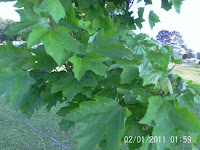Hello! It’s week five of the first month of our blog. Today we’ll talk about the West and West Coast and the flowers and vines you might find there. When I glanced over my list and further researched each item, kiwifruit stood out. Why?
 |
| http://en.wikipedia.org/wiki/Kiwifruit |
First, I didn’t know the true name was kiwifruit. Kiwi is actually a nickname. My research further revealed that kiwifruit is grown on a vine, like a grape, and cultivated in a similar manner. Did you know kiwifruit is the most nutrient dense fruit? Kiwifruit is rich in vitamin C and potassium.
If you’re allergic to latex, you could be allergic to this fruit, because of its unique enzymes. Some of these enzymes break down milk and gelatin, so it is unsuitable for many desserts. Kiwifruit is great either raw or made into jam. Recipes are available at http://www.kiwifruit.org/recipes/
Christina, Betty, and I have learned a lot on our “plant” tour of the United States and we hope you have also. Now you know where to go when you need a flower for a bridal bouquet, fruit tree for a historical, or a strangling vine for a murder mystery. June will feature writing prompts, thoughts and ideas concerning weather so make sure to stop by each week and add to your creative wordlists. See you then!
Writing prompt for the week: He wrenched the kiwifruit from Anna's hand, and...
Flowers of the West
Mountain heather
Thistle sage
Tolmie star-tulip
Monkey-flowers
Buttercup/Coyote’s eyes
Rabbit brush
Bitter root
Foxglove
Mountain lady’s slipper
Yucca
Western Flowering Vines and Parasitic Plants
Bougainvillea
Jasmine
Grapevines
Japanese Honeysuckle
Kiwifruit
Flowering Trees
Horse chestnut
Silk Tree/Mimosa
Indian bean tree
Judas tree
Flowering dogwood
Chinese lantern tree
Crape myrtle
Tulip tree
Southern magnolia
Crab apple
Japanese cherry












